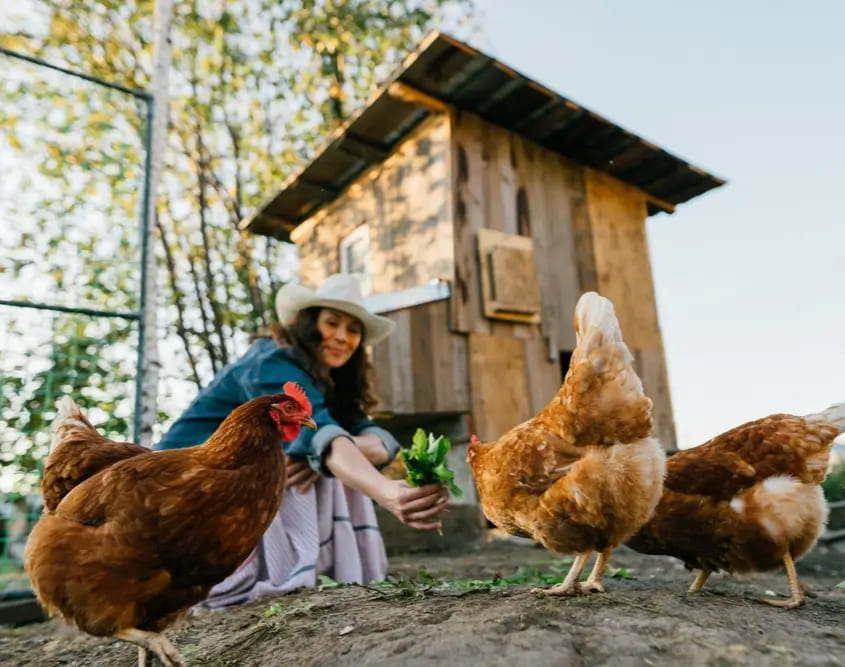Having domesticated poultry, especially chickens, in your backyard is an advantage as you will be able to get fresh eggs as well as promote an economical way of life. Anyone who wants to earn high returns on their venture must ensure that he/she has constructed good chicken houses. In this guide, you will learn the fundamental things to do while establishing your chicken coop to make your hens comfortable, healthy, productive, and efficient in Australian backyard farming.
Understanding Your Chickens’ Needs
To begin with, it is important to know what chickens need to lay optimum eggs, which is important for profit-making. It is also very important to maintain a clean and safe environment free from pests and other unfavourable conditions that may affect the well-being of the occupants. That’s why chickens need freedom of movement, to lay eggs, and perform other natural activities. This entails having a warm roosting zone, nests for hen rearing, and a place that is dry and has proper ventilation.
Selecting the Right Location
It is easy for a beginner to get lost when selecting a suitable place for the chicken house. Choose a location that is exposed to sunlight for most parts of the day, as this makes the temperatures of the chicken body stable and enhances the laying of eggs. It should also be protected from strong winds and predators, as these affect the birds and their laying pattern.
Designing Your Chicken House
Throughout the planning process of the chicken house, it is necessary to take into consideration not only the house itself but also the chicken runs in Australia Style, and this means that as much space for hen enclosure as possible should be considered for the hens. Chickens require the ability to peck, scratch, and forage in a spacious area, thus improving their health and productivity in the process.
Key Components of a Chicken House
1. Lighting:
Proper lighting will enable fresh air with little humidity to circulate in order to have good health. It recommended that—to allow air ventilation—mesh windows or vents should be used. Use artificial light in the morning and evening or during short days for the birds to lay eggs.
2. Nesting Boxes:
There should be one nesting box for every three or four hens. Such boxes should be comfortable and private to accommodate hens on their nests of eggs comfortably. It is therefore recommended that they be lined with straw or wood shavings to attain a clean environment.
3. Roosting Bars:
They should be horizontally placed at a distance of around 60-90 centimetres above the floor. Yes, chickens are known to prefer to roost, and especially when furnished with a high place to rest, they will lay more eggs.
4. Diet and Hygiene:
Cleaning of the cage or coop as well as the laying area or floor of the debe should be done frequently. Design the housing from materials that are easy to wash, flat surfaces such as concrete floors or wooden floors that have been painted.
5. Heating:
Depending on the climate of the locality, heated air may require the use of heating equipment like a heat lamp or a space heater. Its effects on the bodies of the animals and their performance make it vital to maintain the right temperature that supports yolk development.
Building the Chicken Run
A large space for the chickens to roam should be provided to ensure good egg production. To make it predator-proof, there should be a wire or a mesh with small gaps that cannot be used by small animals to gain entry.
Feed and Water
Feed quality affects the production of the eggs. The patients should undergo a proper nutrition plan that includes more proteins, calcium, and other relevant nutrients. Provide cold and clean water every time, as sometimes birds can go without food for long due to thirst, and this leads to poor egg production.
Setting Up a Backyard Chicken Coop and Run
Regarding the construction of the setup for the chicken’s home and run, going for DIY methods or purchasing a kit is wise to save costs. Please make sure that your design follows the guidelines above regarding the level of comfort, safety, and space. Probably some local resources and online groups can also offer more specific advice regarding local climates in Australia and likely breeds of chickens.
Conclusion
It is challenging to optimise the process of building a chicken house for raising chickens with the intent of attaining high levels of egg production. In this aspect, the comfort and requirements of your chickens must be well provided since this determines the success of setting up a backyard chicken coop and run. Therefore, no matter if you start from an empty place or come into an already-built structure, do not forget that productive chickens depend on the health and comfort of the birds.
